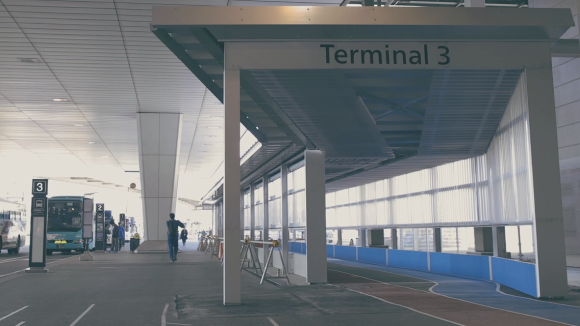
Narita Airport is the Tokyo area’s largest access point for air travelers. This month, the terminal added a new terminal specifically designed for low-cost carriers and budget travelers, but as this sneak peak video shows, affordable can overlap with innovative and stylish, as Terminal 3 is set to prove that you don’t have to spend big to help people travel in ease and comfort.
The new terminal opened on April 8, with the goal of better serving the changing needs of those flying to and from eastern Japan. According to Narita management, in 2014 low-cost carriers made up 19.3 percent of flights at the airport, a rapid increase from just 6.1 percent in 2012.
However, in constructing a building just for such flights, there are obviously budgetary concerns to take into consideration, and the goal was to build Terminal 3 for half the cost a facility of such size would ordinarily entail. Not only has the team succeeded, as the video below shows being inexpensive doesn’t have to feel cheap.
Primary construction was handled by Nikken Sekkei, the same architecture firm responsible for the Tokyo Skytree. Seeking to keep things as simple and functional as possible, the designers were faced with a tricky challenge.
The tight budget meant that moving walkways, which are often employed to help travelers quickly move about airports, weren’t going to be an option. On the other hand, tramping around on hard concrete or tile flooring can quickly tire out your feet, ankles, and knees, especially if you’re lugging a heavy suitcase with you. So what did Nikken Sekkei decide to do?
Install surfaces made out of the same shock-absorbing material as running tracks.
Different sections of the flooring even have different colors, serving as paths to the departure and arrival area. Those who’re about to start their journey by soaring off into the blue sky should follow the similarly colored blue track. On the other hand, if you’ve just landed, the earthy red paths will lead you to the arrival area. As an added bonus, this also reduces the need for costly electronic displays to guide travelers around the building.
▼ Large cloth banners also cut down on the need for electronic signage
Nikken Sekkei wasn’t alone in thinking up solutions like these, though. Also working on the project were digital creative firm PARTY and Ryohin Keikaku, a division of interior goods manufacturer Mujirushi Ryohin, also known internationally as Muji. Utilizing the company’s experience in simple yet comfortable design, Ryohin Keikaku was responsible for supplying tables and chairs for Terminal 3’s food court, as well as sofas for the rest of the terminal.
Ryohin Keikaku put an extra amount of effort into the sofas. Whereas many airports specifically design their furniture to prevent lengthy lounging, Ryohin Keikaku realized that budget travelers don’t have the option of heading off to relax at a VIP club room before departure. As such, Terminal 3’s sofas were specifically designed to allow travelers to stretch out on them, and Ryohin Keikaku even used Mujirushi Ryohin’s mattresses as a comfort benchmark.
“We had to think about how to change the negative connotations of ‘low-cost,’” explains Nikken Sekkei’s Takao Goto, “about how to change that into a fun, positive image.” From the preview video, Terminal 3 may not have all the luxurious amenities of some more opulent airport facilities, but it definitely looks like a hassle-free way to start your trip, plus a smooth, easy way to transition back to daily life once it’s time to come home.
Sources: Kai-You, Vimeo, Narita Airport
Images: Vimeo

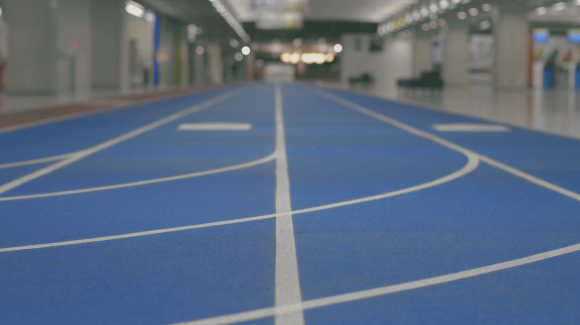
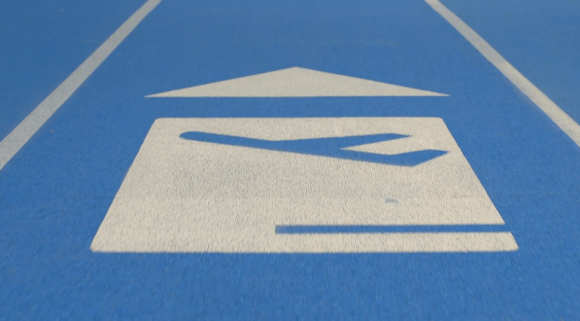
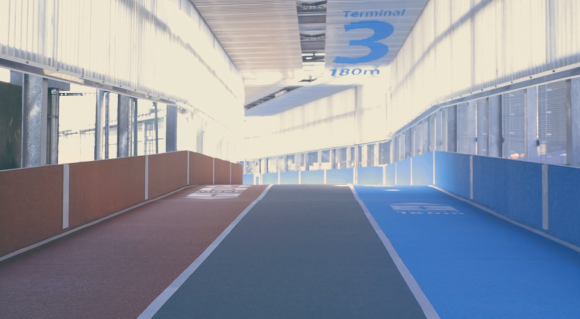
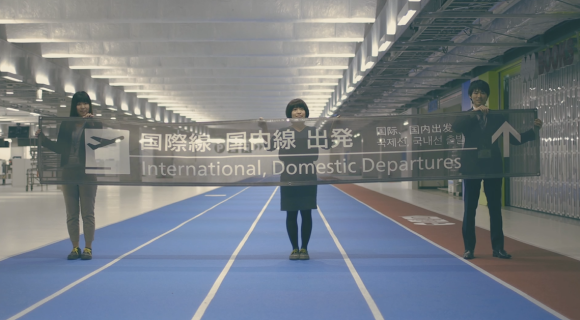
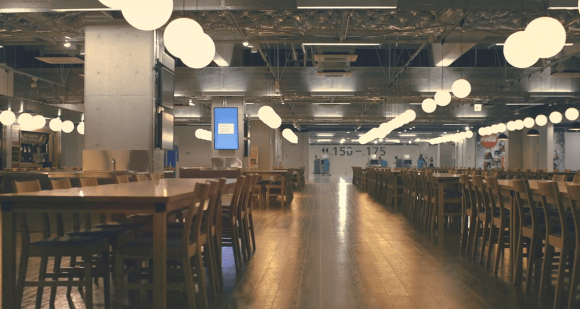
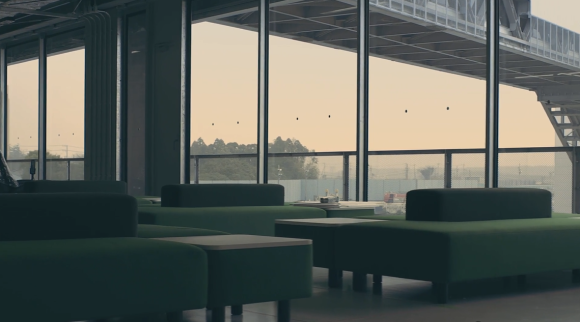
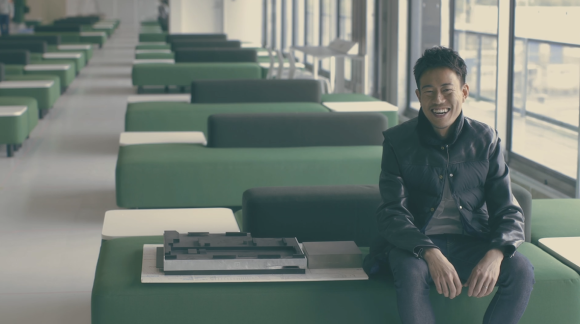
 Narita Airport starts free cultural event series with kimono-wearing, manga creator experiences
Narita Airport starts free cultural event series with kimono-wearing, manga creator experiences Tokyo’s Haneda Airport becomes fourth airport in the world to be awarded coveted 5-Star rating
Tokyo’s Haneda Airport becomes fourth airport in the world to be awarded coveted 5-Star rating Japanese brand Muji’s new soy meat can be stored at room temperature, needs no hydration
Japanese brand Muji’s new soy meat can be stored at room temperature, needs no hydration New Welcome to Kanto Pasmo IC Card is the most kawaii way to ride trains on a trip to Japan
New Welcome to Kanto Pasmo IC Card is the most kawaii way to ride trains on a trip to Japan 2014: The 10 best airports in the world
2014: The 10 best airports in the world McDonald’s new Happy Meals offer up cute and practical Sanrio lifestyle goods
McDonald’s new Happy Meals offer up cute and practical Sanrio lifestyle goods All-you-can-drink Starbucks and amazing views part of Tokyo’s new 170 meter-high sky lounge
All-you-can-drink Starbucks and amazing views part of Tokyo’s new 170 meter-high sky lounge Starbucks reopens at Shibuya Scramble Crossing with new look and design concept
Starbucks reopens at Shibuya Scramble Crossing with new look and design concept Beautiful Sailor Moon manhole cover coasters being given out for free by Tokyo tourist center
Beautiful Sailor Moon manhole cover coasters being given out for free by Tokyo tourist center More foreign tourists than ever before in history visited Japan last month
More foreign tourists than ever before in history visited Japan last month Hamster abandoned at Tokyo ramen restaurant gets new home
Hamster abandoned at Tokyo ramen restaurant gets new home Disney princesses get official manga makeovers for Manga Princess Cafe opening in Tokyo
Disney princesses get official manga makeovers for Manga Princess Cafe opening in Tokyo Mister Donut ready to make hojicha dreams come true in latest collab with Kyoto tea merchant
Mister Donut ready to make hojicha dreams come true in latest collab with Kyoto tea merchant Foreigners can now apply for visas to visit fiancés living in Japan
Foreigners can now apply for visas to visit fiancés living in Japan Mint Pepsi for Yakisoba is coming to Japan, and we got to taste it before it goes on sale
Mint Pepsi for Yakisoba is coming to Japan, and we got to taste it before it goes on sale We try out “Chan Ramen”, an underground type of ramen popular in the ramen community
We try out “Chan Ramen”, an underground type of ramen popular in the ramen community Beautiful new Final Fantasy T-shirt collection on the way from Uniqlo【Photos】
Beautiful new Final Fantasy T-shirt collection on the way from Uniqlo【Photos】 Foreign English teachers in Japan pick their favorite Japanese-language phrases【Survey】
Foreign English teachers in Japan pick their favorite Japanese-language phrases【Survey】 Is the new Shinkansen Train Desk ticket worth it?
Is the new Shinkansen Train Desk ticket worth it? There’s a park inside Japan where you can also see Japan inside the park
There’s a park inside Japan where you can also see Japan inside the park Japanese convenience store packs a whole bento into an onigiri rice ball
Japanese convenience store packs a whole bento into an onigiri rice ball Studio Ghibli releases Kiki’s Delivery Service chocolate cake pouches in Japan
Studio Ghibli releases Kiki’s Delivery Service chocolate cake pouches in Japan Japan’s bone-breaking and record-breaking roller coaster is permanently shutting down
Japan’s bone-breaking and record-breaking roller coaster is permanently shutting down New definition of “Japanese whiskey” goes into effect to prevent fakes from fooling overseas buyers
New definition of “Japanese whiskey” goes into effect to prevent fakes from fooling overseas buyers Foreign passenger shoves conductor on one of the last full runs for Japan’s Thunderbird train
Foreign passenger shoves conductor on one of the last full runs for Japan’s Thunderbird train Our Japanese reporter visits Costco in the U.S., finds super American and very Japanese things
Our Japanese reporter visits Costco in the U.S., finds super American and very Japanese things Kyoto bans tourists from geisha alleys in Gion, with fines for those who don’t follow rules
Kyoto bans tourists from geisha alleys in Gion, with fines for those who don’t follow rules Studio Ghibli unveils Mother’s Day gift set that captures the love in My Neighbour Totoro
Studio Ghibli unveils Mother’s Day gift set that captures the love in My Neighbour Totoro Domino’s Japan now sells…pizza ears?
Domino’s Japan now sells…pizza ears? New Japanese KitKat flavour stars Sanrio characters, including Hello Kitty
New Japanese KitKat flavour stars Sanrio characters, including Hello Kitty Sales of Japan’s most convenient train ticket/shopping payment cards suspended indefinitely
Sales of Japan’s most convenient train ticket/shopping payment cards suspended indefinitely Sold-out Studio Ghibli desktop humidifiers are back so Totoro can help you through the dry season
Sold-out Studio Ghibli desktop humidifiers are back so Totoro can help you through the dry season Japanese government to make first change to romanization spelling rules since the 1950s
Japanese government to make first change to romanization spelling rules since the 1950s Ghibli founders Toshio Suzuki and Hayao Miyazaki contribute to Japanese whisky Totoro label design
Ghibli founders Toshio Suzuki and Hayao Miyazaki contribute to Japanese whisky Totoro label design Doraemon found buried at sea as scene from 1993 anime becomes real life【Photos】
Doraemon found buried at sea as scene from 1993 anime becomes real life【Photos】 Tokyo’s most famous Starbucks is closed
Tokyo’s most famous Starbucks is closed One Piece characters’ nationalities revealed, but fans have mixed opinions
One Piece characters’ nationalities revealed, but fans have mixed opinions We asked a Uniqlo employee what four things we should buy and their suggestions didn’t disappoint
We asked a Uniqlo employee what four things we should buy and their suggestions didn’t disappoint Princesses, fruits, and blacksmiths: Study reveals the 30 most unusual family names in Japan
Princesses, fruits, and blacksmiths: Study reveals the 30 most unusual family names in Japan Studio Ghibli’s new desktop Howl’s Moving Castle will take your stationery on an adventure
Studio Ghibli’s new desktop Howl’s Moving Castle will take your stationery on an adventure Flying out of Narita Airport? Don’t miss its awesome departure area mattress-soft sofas
Flying out of Narita Airport? Don’t miss its awesome departure area mattress-soft sofas What’s the real reason for the ‘floating’ 3-D signs at Haneda Airport?
What’s the real reason for the ‘floating’ 3-D signs at Haneda Airport? Anybody want to live rent-free in a house in a Japanese beach town for two years?
Anybody want to live rent-free in a house in a Japanese beach town for two years? A visit to T-CAT, Tokyo’s often forgotten City Air Terminal【Photos】
A visit to T-CAT, Tokyo’s often forgotten City Air Terminal【Photos】 Tokyo starts massive renovation project for entrances to the world’s busiest train station
Tokyo starts massive renovation project for entrances to the world’s busiest train station Hello Kitty offers limited-time hospitality at Narita Airport with cute kitty drinks and meals
Hello Kitty offers limited-time hospitality at Narita Airport with cute kitty drinks and meals Sweet Tokyo food souvenir Tokyo Banana teams up with Kyoto matcha maker for brand new cake
Sweet Tokyo food souvenir Tokyo Banana teams up with Kyoto matcha maker for brand new cake Muji opens its first prepared food-themed store in Higashi Ikebukuro
Muji opens its first prepared food-themed store in Higashi Ikebukuro Muji designs cool all-weather self-driving shuttle bus, aims to implement it in Finland in 2020
Muji designs cool all-weather self-driving shuttle bus, aims to implement it in Finland in 2020 Narita Airport shuttle buses – Cheaper than the train, but which bus is best?
Narita Airport shuttle buses – Cheaper than the train, but which bus is best? Japanese temple and shrine craftsmen now building world’s coolest doghouses, the Inudono【Pics】
Japanese temple and shrine craftsmen now building world’s coolest doghouses, the Inudono【Pics】 Haneda Airport’s new rice ball stand — Sister shop Tokyo’s best out-of-the-way onigiri spot
Haneda Airport’s new rice ball stand — Sister shop Tokyo’s best out-of-the-way onigiri spot Come for the toilets, stay for the food and fun at Bangkok’s airport-themed mall “Terminal 21”
Come for the toilets, stay for the food and fun at Bangkok’s airport-themed mall “Terminal 21” This gorgeous hot spring is actually part of one of Japan’s most convenient airports【Photos】
This gorgeous hot spring is actually part of one of Japan’s most convenient airports【Photos】 Tokyo airport’s new train line to make getting into, out of the city easier for JR pass holders
Tokyo airport’s new train line to make getting into, out of the city easier for JR pass holders Akira’s Katsuhiro Otomo to design giant mural featuring cyborg fish for Tohoku’s Sendai Airport
Akira’s Katsuhiro Otomo to design giant mural featuring cyborg fish for Tohoku’s Sendai Airport Star Wars X-wing fighter docks at Singapore airport, travelers encouraged to sit in its cockpit
Star Wars X-wing fighter docks at Singapore airport, travelers encouraged to sit in its cockpit
Leave a Reply